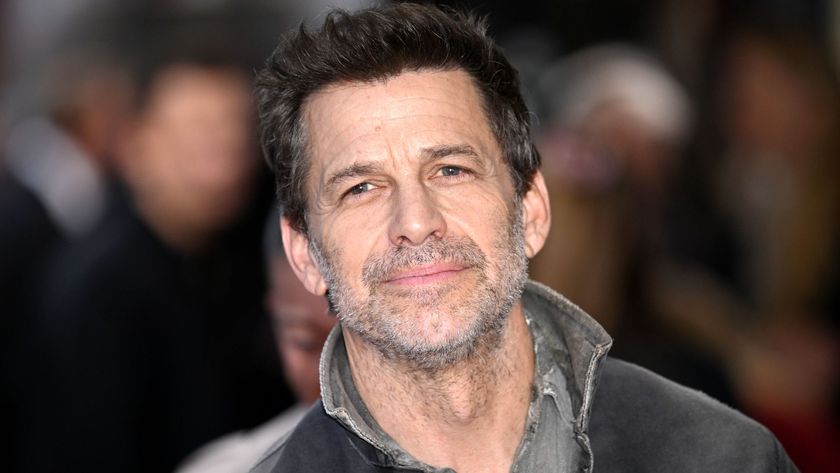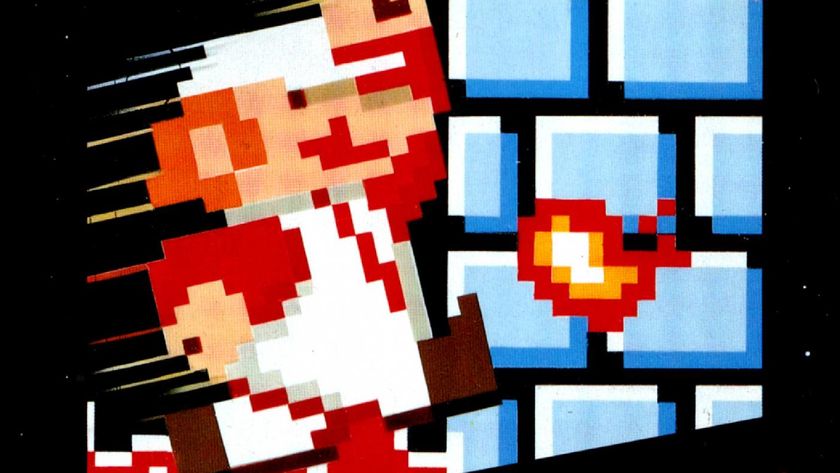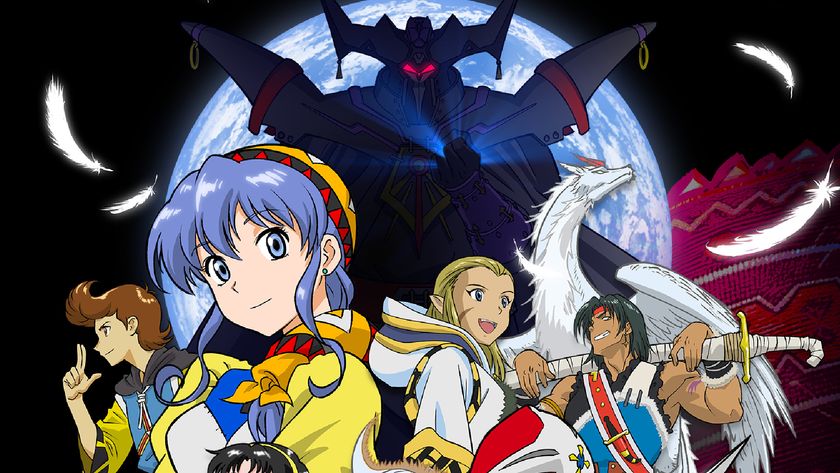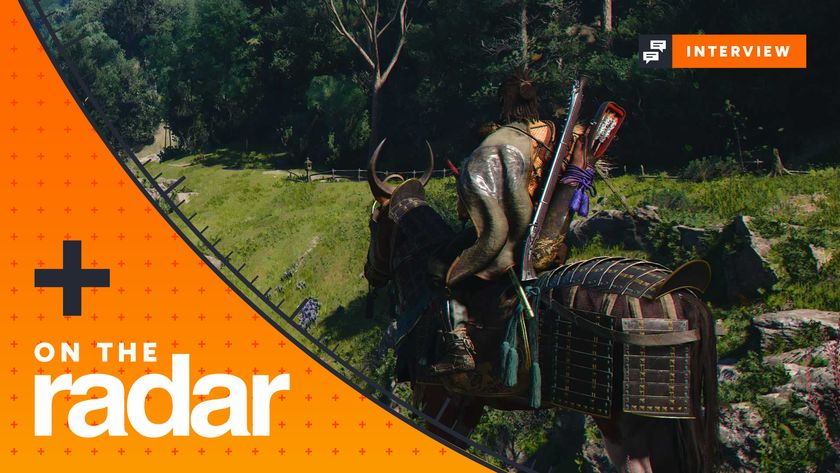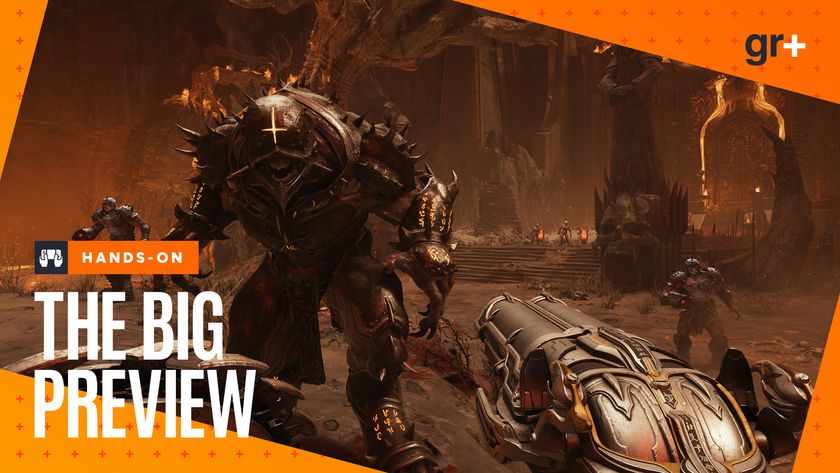The Story Behind Friday The 13th
Grab your hockey mask for a trip through horror history…
This week, the DVD Club team will be slashing into the original Friday The 13th .
So what better time to take a look at the whole franchise, from first horrific spark through the various sequels and this year's remake?
It doesn't look like Jason Voorhees is going away any time soon, so grab your knife, lose your inhibitions and come with us to Camp Crystal Lake - and beyond…
To help keep costs down, certain crew members (like Savini) stayed at the camp itself, entertaining themselves with Savini's Betamax (remember that, kids?) video player and the films Barbarella and Marathon Man. Savini can recite them by heart after watching one of them day for the entire shoot.
The camp time even helped influence a scene in the film. Inspired by Savini's encounter with a snake, the team added a moment where a real, live snake is discovered and killed by the teens. Suffice to say the Humane Society was not on set that day.
With the cut in the can, Cunningham needed music, and turned to Henry Manfredini to create it. The composer decided to stick to scoring the scenes where the killer is shown, largely using silence to up the tension at other times.
"There's a scene where one of the girls is setting up the archery area. One of the guys shoots an arrow into the target and just misses her. It's a huge scare, but if you notice, there's no music. That was a choice."
And he's also responsible for one of the other memorable aspects of the first film - the killer's theme, largely thought to be the whispered tone "chi…chi…chi… Ha…ha…ha…" But that's wrong - inspired by Mrs Voorhees' line "Kill her, mommy" (since she's supposed to be possessed by Jason), Manfredini spoke the words "ki, ki, ki, ma, ma, ma" ("kill" and "mommy" - get it?) into a microphone, added some reverb and a legend was born. Even if everyone hears it wrong. "Everybody thinks it's cha, cha, cha. I'm like, 'Cha, cha, cha? What are you talking about?"
Either way, the film was a roaring success, with Paramount immediately splashing out $1.5 million for distribution rights and lavishing promotional money on the movie both before it arrived in the US (on, er, May 9 1980) and after it began to perform well. With all the various promotional materials added in, the film cost $4.4 million and made $39.7 million across the pond.
The critics hated it - not a big surprise - but that didn't stop it rolling on to more than $20 million around the world.
While it's not exactly seen as a brilliantly made film, it's long since entered the pantheon of cult horrors.
And it has launched a sequel or two. Or 10…
Next: Friday The 13th Part 2
[Page-break]
Next: Friday The 13th Part III
[Page-break]
Sign up for the Total Film Newsletter
Bringing all the latest movie news, features, and reviews to your inbox
Next: Friday The 13th: The Final Chapter
[Page-break]
Next: Friday The 13th Part V: A New Beginning
[Page-break]
Next: Jason Lives: Friday The 13th Part VI
[Page-break]
Next: Friday The 13th Part VII: The New Blood
[page-break]
Next: Friday The 13th Part VIII: Jason Takes Manhattan
[page-break]
Next: Jason Goes To Hell: The Final Friday
[page-break]
9. Jason Goes To Hell: The Final Friday
With the franchise now in New Line's hands, the studio decided to recruit one of Jason's founding fathers - producer Sean Cunningham - to shepherd their first attempt on to the screen.
The Friday series had been in stasis for several years until Jason was reanimated for a complicated little run-around involving the members of his extended family and the revelation that he couldn't be killed by anyone except them.
Oh, and that his evil, murderous spirit could possess anyone, allowing him to leap between victims and continue his spree.
Realising that they had to step up and keep the films going, New Line threw the film into heavy development and offered the directing job to several people, including John McTiernan and Tobe Hooper.
Eventually, however, the gig would go to Adam Marcus, who had a character, FBI agent Elizabeth Marcus named after him.
Originally titled Friday The 13th Part IX: The Dark Heart of Jason Voorhees, it explored his backstory and ramped up the supernatural elements. In another incarnation, it was titled Jason Goes To LA, with the masked one butchering two rival gangs, leading to them teaming up to take him on.
It was also planned to feature a cameo by his mother, but a Betsy Palmer turned down the idea.
Oh, and in case you're wondering why the FBI suddenly has an entire unit dedicated to stopping Mr Voorhees, you might want to try to find the three-issue comic adaptation, which includes lots of info that never made it into the final film.
For those who hate the idea that the Friday films always get sliced to ribbons in the editing room, this is the first of the franchise that you can buy on an unrated DVD.
But even that didn't help make money - the movie ended up with bad reviews and a $15.9 million box office haul.
Though it had been designed with a finale intended to set up a meeting between Jason and Freddy (whose arm at the end is played by Kane Hodder), it would be a few years before that script was ready. In the meantime, Jason would go into orbit…
Next: Jason X
[Page-break]
10. Jason X
Instead of letting the property cool off while it waited for Freddy Vs Jason to be ready, New Line opted to pump out a sci-fi take on Jason's slaughtering ways.
The result is a futuristic tale of Voorhees, captured by the government for study, ending up frozen until the year 2455, when he's defrosted by a group of students on a field trip to the polluted, ruined Earth.
Once on their ship, he naturally starts to kill everyone. Because that's how he rolls, even if it leads to him becoming an extra-powerful cyborg version of himself.
Todd Farmer was the man in charge of writing the script (plus playing a role in the movie) and brought his love of Alien to the story, including a character - his, funnily enough - named Dallas. Oh, and others are named after mates he played with in the online game Everquest. Nyerd!
Loaded with references to the other films and boasting even a virtual reality recreation of Camp Crystal Lake (which was also to have included Mrs Voorhees, who Jason would kill before the idea was dropped), it tried its hand at satirizing the series. And there's a callback to part seven's sleeping bag kill.
Director James Isaac became the first of the Friday helmers to use digital effects to create some of the kills, but it was also the least edited of all the series. And that's despite the highest body count of all, with JV taking out 28 victims.
Unfortunately, it also marked a new box office low for the series, earning just $13.1 million and earning a review from Roger Ebert that included a quote from the script - "this sucks on so many levels."
Bring on Freddy!
Next: Freddy Vs Jason
[Page-break]
Next: 2009's remake and beyond
[Page-break]
"It’ll happen differently in our movie than in the third one. Where is Jason from, why do these killings happen, and what is Crystal Lake?"
After scrapping having a story focused on Tommy Jarvis, they chose to set the film in present-day America, instead of going for a period piece.
Freddy Vs Jason writers Damian Shannon and Mark Swift were lined up to write it, and Dunes regular Jonathan Liebesman was negotiating the direct. But when scheduling fell through on their first choice, the producers turned to Texas Chainsaw relaunch overseer Marcus Nispel, who had to be cajoled into taking on another franchise.
Follwing a long round of casting sessions, trying to find the perfect group of young actors for a staggering 13 roles, the team also needed a Jason. Stuntman Derek Mears got the job after impressing the director and producers with his attitude, and also with his answer to whether he could play the dark side of Voorhees: "They were like, 'You're really nice...are you going to be able to switch over, right?' I was like, 'I cage fight and I've got a lot of dad issues. So yeah.'"
The new version would boast digital effects from Asylum, plus a load of new prosthetics for Mears performance as Jason. But one mean-looking scar was all real: Aaron Yoo had his appendix removed before finishing work on the film - and his first shot back was the image of his lifeless body, hung upside down, with his operation scar visible to all.
Steve Jablonsky, another Platinum Dunes regular, got the gig to create the music, which was heavily inspired by Henry Manfredini's original score.
Arriving on February, Friday 13th 2009, the movie had a successful opening weekend, but saw its fortunes drop significantly - to sixth place in the US charts - the very next week.
Still, despite seriously mixed reviews, it made $65 million across the pond, so naturally a sequel is on the way.
So far, little is known about the new movie, though it looks like Swift and Shannon are again writing the script.
No director is attached and New Line has yet to flash the greenlight.
But everyone knows Jason doesn't die that easily…
Like This? Then try...
- 8 Great Movie Family Portraits
- 8 Awesomely Stupid Movie Fight Scenes
- 7 Respected Directors Who Did Horror
Sign up for our free weekly newsletter here .
Follow us on Twitter here .
James White is a freelance journalist who has been covering film and TV for over two decades. In that time, James has written for a wide variety of publications including Total Film and SFX. He has also worked for BAFTA and on ODEON's in-cinema magazine.
